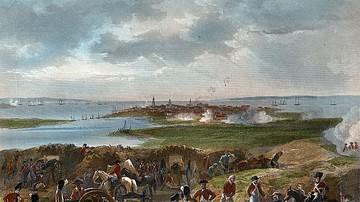Review

| Rating: | |
|---|---|
| Title: | Lyman Trumbull and the Second Founding of the United States (American Political Thought) |
| Author: | Paul Rego |
| Audience: | University |
| Difficulty: | Medium |
| Publisher: | University Press of Kansas |
| Published: | 2022 |
| Pages: | 336 |
Paul M. Rego’s "Lyman Trumbull and the Second Founding of the United States" gives students and scholars alike a study of the congressional career of a Democrat-turned-Republican as he advocated for important legislation to end slavery in the United States. Rego's work can confidently be recommended to understand better the work that went on in Congress as the nation struggled against itself.
Rego, Professor of Politics at Messiah University, gives readers a deeper understanding of Lyman Trumbull than a simple biography would provide. While the work is biographical in following a chronology and covering the prominent moments of Trumbull’s life, Rego orients the text toward Trumbull’s work in the Senate mostly during the Civil War and Reconstruction. The "Second Founding" mentioned in the title refers to Trumbull’s vision for the country and his anti–slavery sentiments. As a Republican congressman, Trumbull made it his mission to fulfill the goal that, in his mind, the Founding Fathers had initiated.
Lyman Trumbull was born on October 12, 1813, in Colchester, Connecticut. After working as a teacher, he practiced law in Illinois and joined the Illinois House of Representatives as a Democrat. After varying degrees of success as a public servant on the state level, Trumbull found himself in the U.S. Senate in 1855 after a close election in which an up-and-coming Abraham Lincoln instructed his supporters to cast their votes for Trumbull. The prior year, 1854, was accepted as a pivotal one in antebellum America. Senator Stephen Douglas successfully passed the Kansas–Nebraska Act, opening western territories of the U.S. to the possibility of slavery.
For both Trumbull, as an anti–Nebraska Democrat, and Lincoln, an anti–Nebraska Whig, the Act provided a rediscovered enthusiasm for national politics. While both would go on to join the newly formed Republican party, Rego reminds readers that Trumbull and Lincoln were not exactly alike. Indeed, Rego notes that Trumbull found himself at odds with Lincoln during the Civil War over the division of power between the executive and legislature.
Trumbull’s name is attached to key Civil War-era legislation, such as the Confiscation Acts, the Habeas Corpus Act of 1867, and the 1866 Freedman’s Bureau Act. Most notable of all is his authorship of the 13th Amendment to the U.S. Constitution. Rego does not just mention legislation worthy of invoking Trumbull’s name to persuade readers to include him among Republicans like Lincoln. Each of the above presented unique difficulties for Trumbull politically and constitutionally. As much as the readers will walk away with a better understanding of Trumbull the Congressman, they will also gain an appreciation for his constitutional thinking and a better understanding of constitutional matters related to the American Civil War and slavery.
Lyman Trumbull and the Second Founding of the United States should find a suitable audience in committed students of the Civil War and Reconstruction. Rego’s use of the Constitution and Trumbull’s application of it also makes this a suitable work for anyone interested in law, constitutional thinking, and legal history. The book follows a simple enough format as it is entirely text-based. While using manuscript collections from Lincoln and Trumbull, Rego cites published sources like records from Congress and correspondence from well-known politicians of the day. He also makes use of the record from the impeachment trial of Andrew Johnson as Trumbull voted for Johnson's acquittal. Given the nature of the Sectional Crisis, Civil War, and Reconstruction, readers unfamiliar with the geopolitics of the era may feel off-put without a map for reference concerning disputes over territories and states.
Given Rego’s focus on Trumbull, those looking for a general history of the Civil War have countless other options as a supplementary text. Regarding Reconstruction, readers may look to works like Eric Foner’s A Short History of Reconstruction (2015).
About the Reviewer
Cite This Work
APA Style
Short, S. (2024, February 06). Lyman Trumbull and the Second Founding of the United States. World History Encyclopedia. Retrieved from https://www.worldhistory.org/review/394/lyman-trumbull-and-the-second-founding-of-the-unit/
Chicago Style
Short, Sam. "Lyman Trumbull and the Second Founding of the United States." World History Encyclopedia. Last modified February 06, 2024. https://www.worldhistory.org/review/394/lyman-trumbull-and-the-second-founding-of-the-unit/.
MLA Style
Short, Sam. "Lyman Trumbull and the Second Founding of the United States." World History Encyclopedia. World History Encyclopedia, 06 Feb 2024, https://www.worldhistory.org/review/394/lyman-trumbull-and-the-second-founding-of-the-unit/. Web. 25 Apr 2025.




